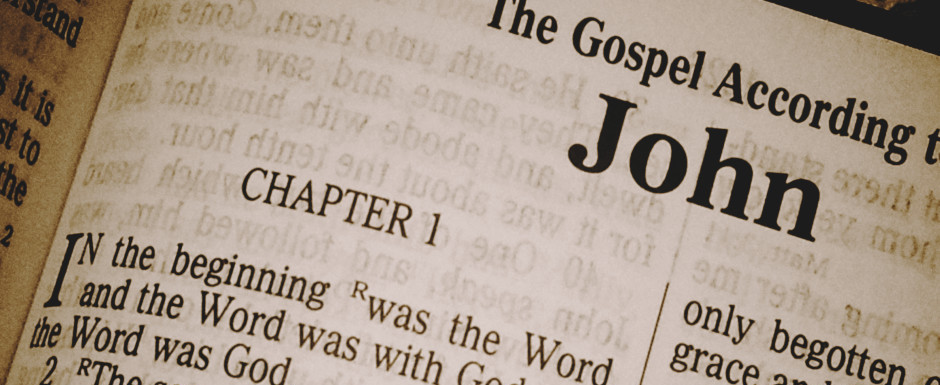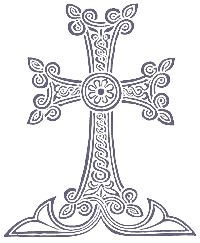Third Sunday after Transfiguration

THE SUNDAY MESSENGER
August 2, 2020
Third Sunday after Transfiguration
The “Sons and Grandsons of St. Gregory” and Early Armenian Histories
Every Sunday, during the set of litanies before the singing of the Lord’s Prayer, the Armenian Apostolic Church recalls and asks for intercession from many of the Church’s most important saints. In many parishes, these are shortened, so we don’t always hear the full list of names when the deacons ask the assembled church to remember “our first leaders and enlighteners.” After listing the two apostles of Christ traditionally said to have evangelized Armenia, Thaddeus and Bartholomew, and then St. Gregory the Illuminator of Armenia, most churches cut the litany. If we continue, however, the next few names are, “Aristakes, Vrtanes, Husig, Grigoris…” These next four are “the sons and grandsons of St. Gregory the Enlightener,” the saints whom the Armenian Apostolic Church commemorates this Saturday. These early patriarchs are the first Catholicosesafter St. Gregory the Illuminator and are his direct descendants. All of them were crucial to the establishment of Christianity in Armenia, becoming important sources of inspiration for subsequent Armenian Christians and leaders. Moreover, we read about these first patriarchs in the very earliest Armenian historical sources. This week, then, after briefly introducing “the sons and grandsons of St. Gregory the Enlightener,” we will also have reason to note the earliest texts and sources we have written in the Armenian language!
Many of us know the story of St. Gregory the Enlightener: how he returned from Caesarea to the court of King Drtad in Armenia and how King Drtad imprisoned him for thirteen years in Khor Virap, the “Deep Pit” after learning that he was the son of the assassin of Drtad’s father. Only at his sister Khosrovidukht’s urging did Drtad free Gregory, who healed the king and convinced him to accept Jesus Christ. Together, Gregory and Drtad as the first Catholicos, the first head of the Armenian Church and as King of Armenia, respectively, set about evangelizing the country. It is at this point in the narrative that Agathangelos, the purported historian of events of Armenia’s conversion, tells us that St. Gregory asked for the help of his sons, Aristakes and Vrtanes. Before this, the History of Agathangeloshad not mentioned Gregory’s sons. The history introduces them, saying that “in time past, when Gregory was still in the flower of his youth and of military age, he had been married and had had two sons” (§ 859).
The elder son was Vrtanes, who “led a secular life,” while the younger was Aristakes, “who from his childhood had been brought up in the service of God. He had entered the religious life of hermits” and lived as a celibate ascetic. Both the sons had remained near Caesarea (Կեսարիա, modern Kayseri in Turkey), and after King Drtad learned that Gregory had sons, he sent messengers “to bring the two sons of Gregory quickly to him.” At first, Aristakes did not want to leave his hermitage in the desert near Caesarea but was eventually persuaded to come help his father with the newly converted Armenians. Though Vrtanes was the elder son, it was Aristakes, as a celibate ascetic, who was ordained a bishop by his father, St. Gregory the Enlightener, in order to help with the early evangelization of Armenia.
While St. Gregory was still alive and working to establish the Church in Armenia, he sent Aristakes to be the representative of the Armenian Church to the First Ecumenical Council, the Council of Nicea, in 325. The “father of Armenian history,” Movses Khorenatsi, adds details of Aristakes’ trip, including that he travelled with the famous Bishop of Caesarea, Leontius, and was numbered among the 318 who assembled at the Great Council. Aristakes brought the canons of the Council of Nicaea back to Armenia. Eventually, Khorenatsi tells us, St. Gregory retreated to the “Caves of Mane” and that after him “Aristakes was patriarch for seven years.” Agathangelos tells us that the pious Aristakes was a successful teacher. While the Buzandaran tells us that Aristakes “died a confessor’s death,” Khorenatsi says that a one Archilaeus, governor of Fourth Armenia, “slew him by the sword.”
After the death of Aristakes, he was succeeded as Catholicos by his older brother Vrtanes. Vrtanes was married but did not have any children until his old age. God answered his prayers for children, and his wife gave birth to twin boys, the elder named Grigoris and the younger named Yusik (Husig). Vrtanes was an able leader of the early Armenian Church, continuing the work of evangelization begun by his father and brother. There was even an attempt on his life, which he thwarted and then managed to convert his would-be killers to Christianity!
TODAY’S BIBLE READINGS:
1 Corinthians 6: 18-7:11 (page 154) New Testament
Matthew 19: 3-12 (page 19) New Testament – (Please follow the Armenian Reading in your Bible)
Isaiah 5:1-10 (pages 685-686) Old Testament
“LORD, the God of heaven, the great and awesome God, who keeps his covenant of love with those who love him and keep his commandments, let your ear be attentive and your eyes open to hear the prayer your servant is praying before you day and night….” (Nehemiah 1:5-6).
Prayers are requested for Ethel Terzian, Taron Poghosyan, Alice Charles, Armen & Theodora Mirakian.
CALLING ALL GRADUATES
The next issue of the LOOYS will feature information about our graduates and we are hoping that you will submit your own details so that you can be included. Write-up should include: full name, parents’ names, name of institution, grade level or degree achieved, activity involvement, and future plans (further education/ work). Please include a picture (in high resolution color), if possible. Everything should be sent to choirboss@hotmail.com by a FINAL deadline of August 9, 2020

